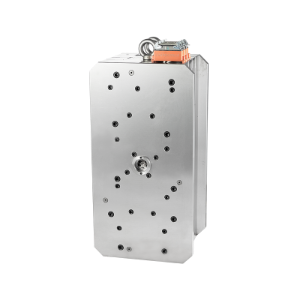 2025.07.04
2025.07.04
 News
News
Nylon cable ties are essential fastening tools widely used across industries for organizing cables, securing components, and ensuring safety. The production of these cable ties relies heavily on precise and efficient molds, which have experienced significant changes over time. The evolution of nylon cable tie molds reflects advances in manufacturing technology, material science, and market demands.

Initially, nylon cable tie molds were relatively simple, designed primarily to produce standard, single-use ties. These molds focused on functionality rather than production efficiency or customization. Early molds were typically made from basic tool steel and featured straightforward cavity designs to shape the nylon into the classic cable tie form: a long, narrow strip with a ratchet mechanism at one end.
At that time, molding technology was more limited. Cooling channels were basic, and precision machining was less advanced, which could longer cycle times and occasional defects such as warping or inconsistent locking mechanisms. Still, these molds served their purpose effectively for the growing cable tie market.
One major development in nylon cable tie molds has been the improvement in mold materials and manufacturing precision.
High-Quality Tool Steel: Modern molds are crafted from grades of tool steel, such as P20 or H13, which offer better wear resistance and thermal stability. This results in longer mold life and consistent product quality over extended production runs.
Advanced CNC Machining: Precision CNC (Computer Numerical Control) machining allows for highly accurate mold cavities, improving the dimensional accuracy of cable ties and reducing defects.
Polishing and Surface Treatment: Improved polishing techniques and surface treatments reduce friction within the mold cavities, smoother nylon flow and enhanced surface finish of the finished ties.
These material and machining upgrades have contributed to higher quality cable ties with better mechanical properties and appearance.
Cooling is a critical factor in injection molding, directly impacting production speed and part quality. Over time, nylon cable tie molds have incorporated more sophisticated cooling systems.
Conformal Cooling Channels: Instead of traditional straight drilled channels, some molds now feature conformal cooling paths designed with the help of simulation software. These channels follow the contour of the mold cavity, providing more uniform cooling and reducing cycle times.
Temperature Control: Enhanced temperature regulation systems maintain consistent mold temperatures, preventing warping and improving dimensional stability.
The result is faster production cycles without sacrificing the quality or strength of the cable ties, meeting increasing market demand efficiently.
To boost output and reduce manufacturing costs, mold designs have shifted toward multi-cavity and family molds.
Multi-Cavity Molds: These molds produce multiple identical cable ties per cycle, significantly increasing throughput.
Family Molds: Some molds can produce different sizes or types of cable ties simultaneously, offering manufacturers greater flexibility in meeting varied customer needs without changing molds frequently.
This change allows for economies of scale and improved production agility, making manufacturers more competitive.
Market demand has driven the development of molds capable of producing a wide range of cable tie designs beyond the standard model.
Special Features: Modern molds can accommodate specialized designs, such as releasable ties, colored ties, UV-resistant materials, or ties with integrated labeling areas.
Complex Locking Mechanisms: Advances in mold design enable more intricate ratchet or locking features that enhance reusability or strength.
Branding and Texturing: Molds can include engraved logos, text, or textured surfaces, improving product differentiation and user experience.
These capabilities allow manufacturers to cater to niche markets and offer customized solutions.